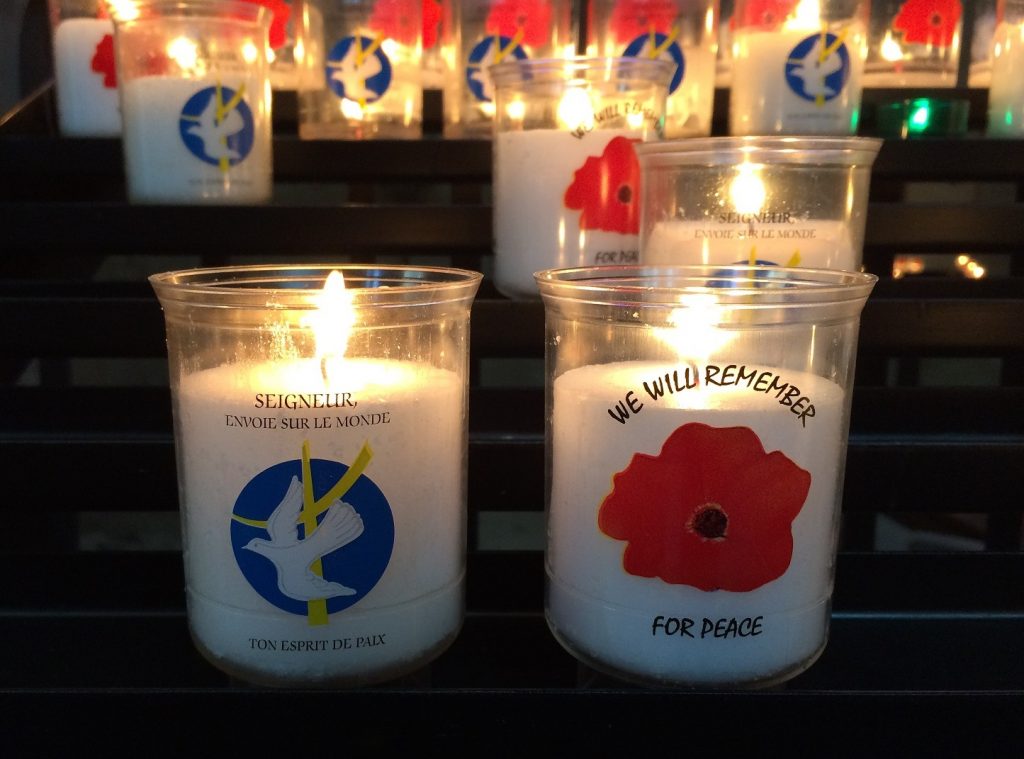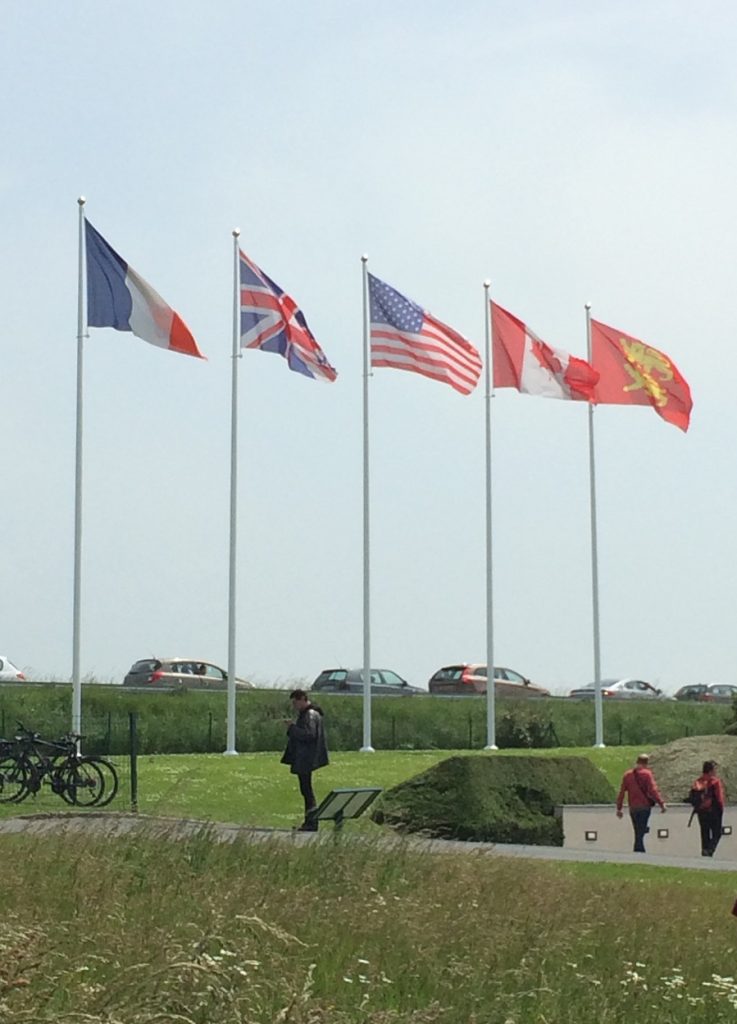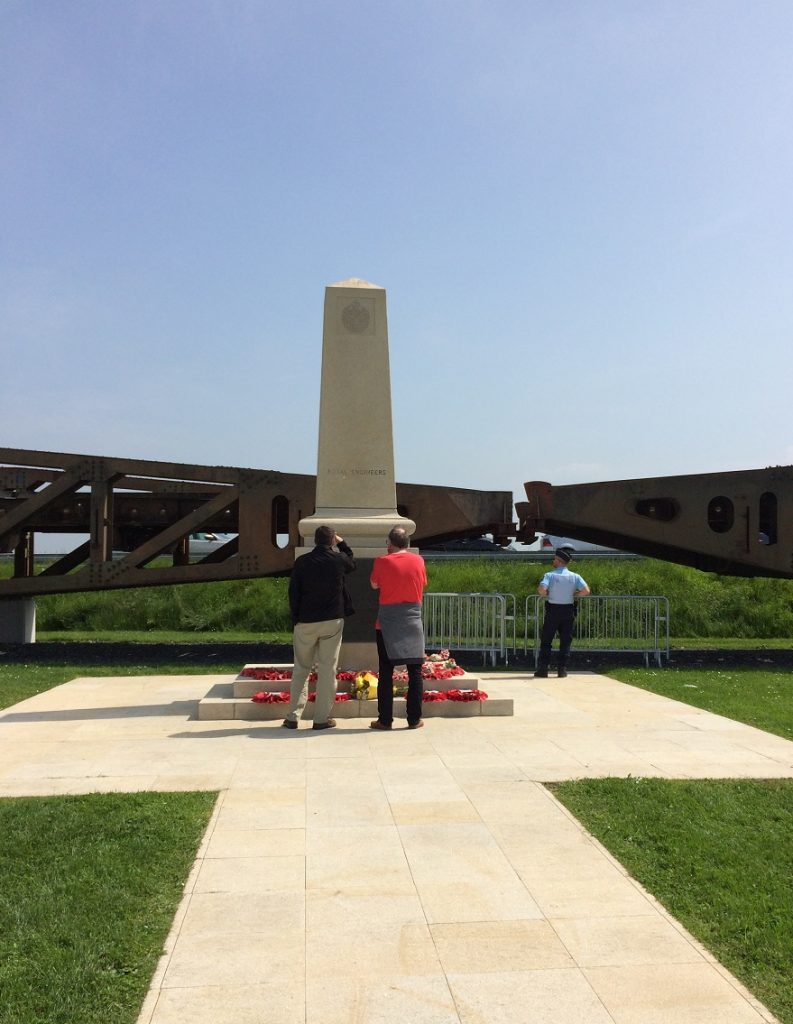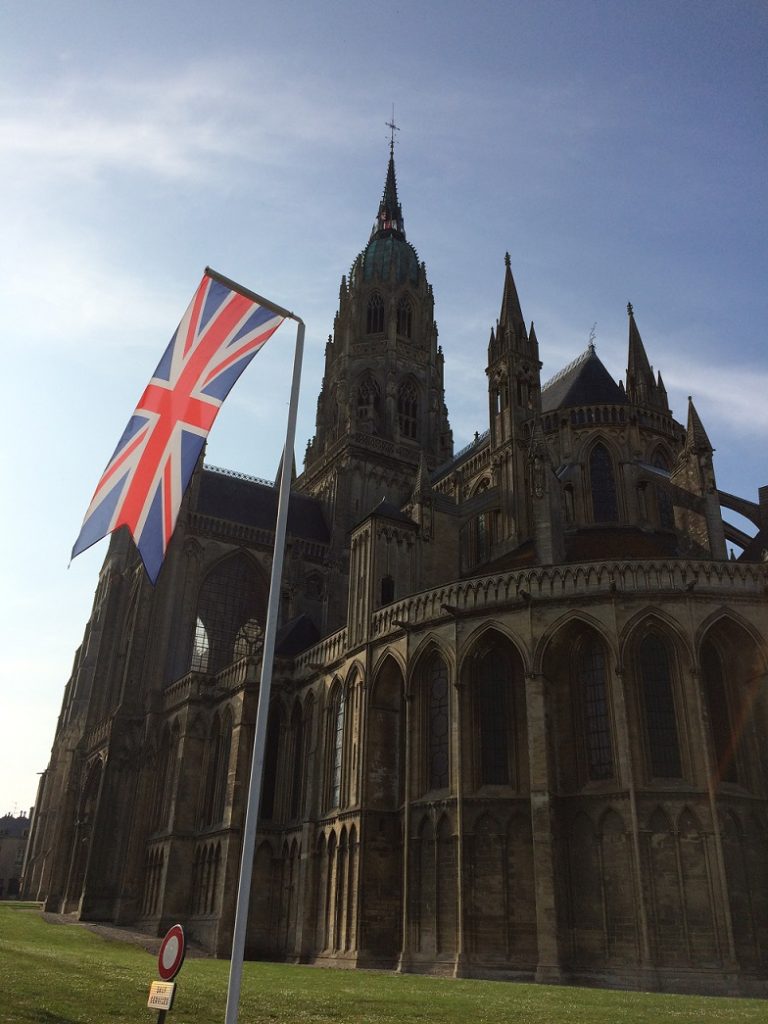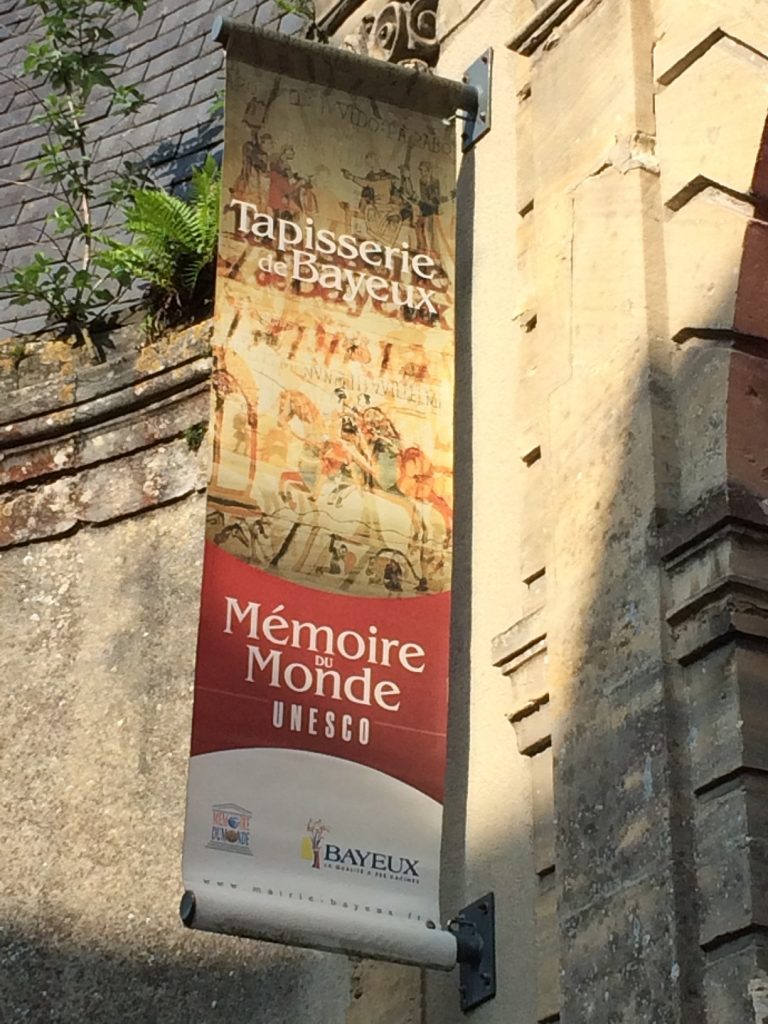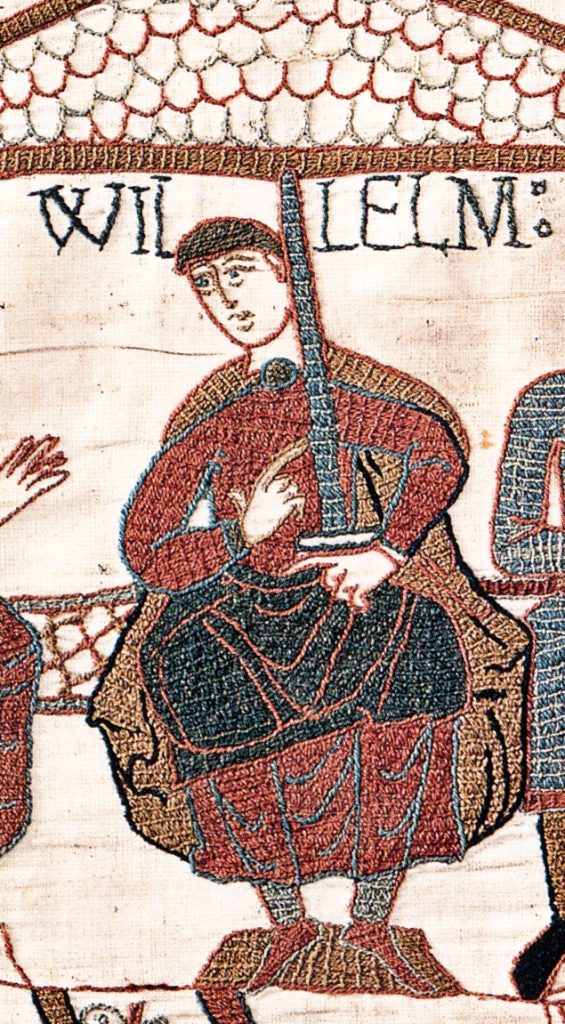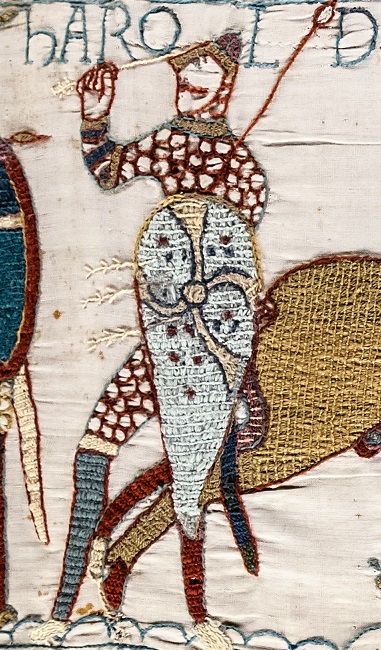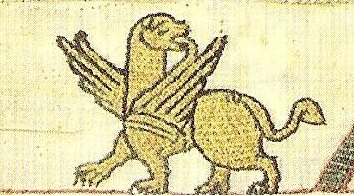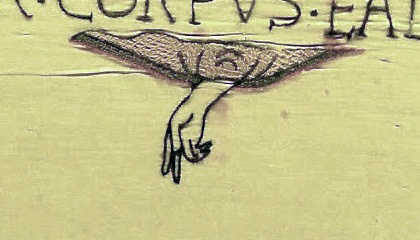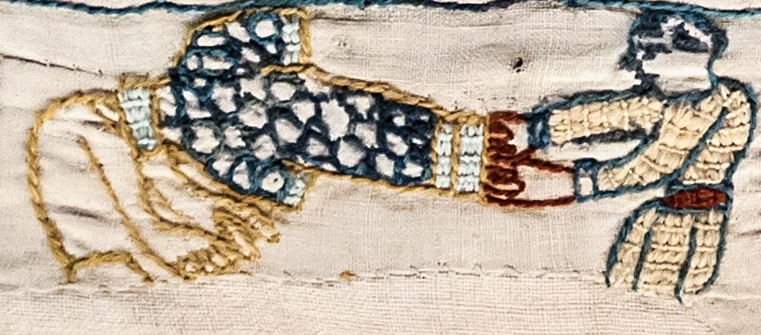We’ve just spent a week of warfare in Normandy. It wasn’t our intention to have a holiday there slap bang in the middle of the D-Day commemorations, nor did we intend to rock up at Gold Beach on the actual anniversary.
But we did, and it was a strange thing.
Arriving in the midst of a sea fret we gazed out at the strange shadows emerging from the bay. Bit by bit, the mists cleared and within minutes we were bathed in steamy sunshine. The atmosphere, too, seemed to sway between melancholy and celebration, with equal numbers of visitors meditating on the events of 72 years ago and those dressed in 1940s kit out for a bit of a party.
From the cliff top above the small town of Arromanches-les-Bains, a sobering glance out to sea reveals the remains of the landing port build by the Allies. Not much remains of Mulberry harbour, but enough to get a general idea of the scale of the thing, built prefab-style in sections towed from Britain and built in the days after the initial landings.
Luckily, Arromanches itself was spared much of the bombing that devastated other communities in Normandy and as we looked down from the cliff towards the seaside town you could make out the strains of Scottish bagpipes and French choirs, performing on the now-peaceful promenade in remembrance of the fallen of D-Day and the subsequent liberation of France.
The cliff-top bears witness to the remains of the battle with rusting gun emplacements and floating bridges. The latter form an unlikely backdrop to the memorial honouring the sappers of the Royal Engineers, where we stopped a-while. Just down from the memorial, past the statue of the Virgin Mary and a row of multi-national flags is the Arromanches 360° Cinema.
The Cinema bombards you with images and sounds of D-Day, while down in the town itself is the Musée du Débarquement gives more detail about the Mulberry harbours and the turn of events following D-Day if you want to immerse yourself in the action or learn more about the context.
Tootling along the coast to Gold Beach we started at Ouistreham and Sword Beach, landed by the British Paratroopers, past Juno Beach, taken by the Canadians, and if we’d continued up the coast, we would have hit Omaha Beach, where US troops landed. It seemed that most nationalities chose to invade again (on a much more peaceful scale) in a show of unity, and throughout Normandy while we were there British, Canadian, American, German and (of course) French flags flew together as the region celebrated an all-encompassing accord of peace.
Driving south west of Arromanches, past the fields full of cars and camper vans and pedestrians spilling on to the roads, we headed to Bayeux. Leaving behind the memories of twentieth century warfare, we went in search of a less sophisticated, yet no less barbaric, battle.
Growing up in the UK, you can’t avoid the date 1066 – it’s our history! But it’s also the history of Normandy and one if it’s most famous sons, William the Bastard, soon to be William the Conqueror, and the amazing tapestry telling the tale of his accession to the English throne.
Now, if I’m honest, I didn’t think much of the Bayeux Tapestry when I was a kid. I thought the figures were a bit basic and the story-telling a bit confused. But, hell – what did I know. Seeing it now, being able to appreciate the historical context and the skill of the embroiderers, I was quite taken with it. I have over the years as a professional picture researcher had to research the tapestry for various publications, and of course, it’s ideal for depicting a king (three of them are featured) from the days before photography. But seeing it in real life with the imaginative and humorous commentary was really worthwhile. The museum housing the tapestry also includes a gallery showing the techniques and materials used to make the tapestry, the history background, genealogical charts and a cinema presentation – all described in both French and English (though actually, some of the translations could have been checked out!) But fair play to them, how many museums in the UK have extended French translations, with or without the odd grammatical error?
What you don’t see in school when you’re learning about the Battle of Hastings, are the delightful caricatures in the friezes above and below the main event of the tapestry. Yes, we’ve all seen William, and Harold with the arrow in his eye, and Halley’s comet – but who’s managed to spot the naked man with the unfeasibly large penis, the dragons and griffins, the soldiers nicking battle trophies and the little Gilliam-esque details?
Hasting and D-Day were separated by nearly nine centuries of turbulent warfare throughout Europe. I wonder if in the 28th century the D-Day beaches will still be tempting tourists. I’m sure if they are, the visitors will be greeted with the same friendly attitude which welcomed us. Normandy, on the eve of the UK referendum, was flying the flags of almost every nation under the sun; outside Bayeux Cathedral where a whole row of union flags flew to honour the British who fought for France’s liberation, at tourist sites where flags of every nation seemed to be represented, and in small towns where the flags of the EU nations flapped alongside the EU flag. Everywhere there seemed to be flag-inspired symbolism of tribal unity and it would be a shame to turn our backs on a united Europe which has held its peace now for over 70 years.
